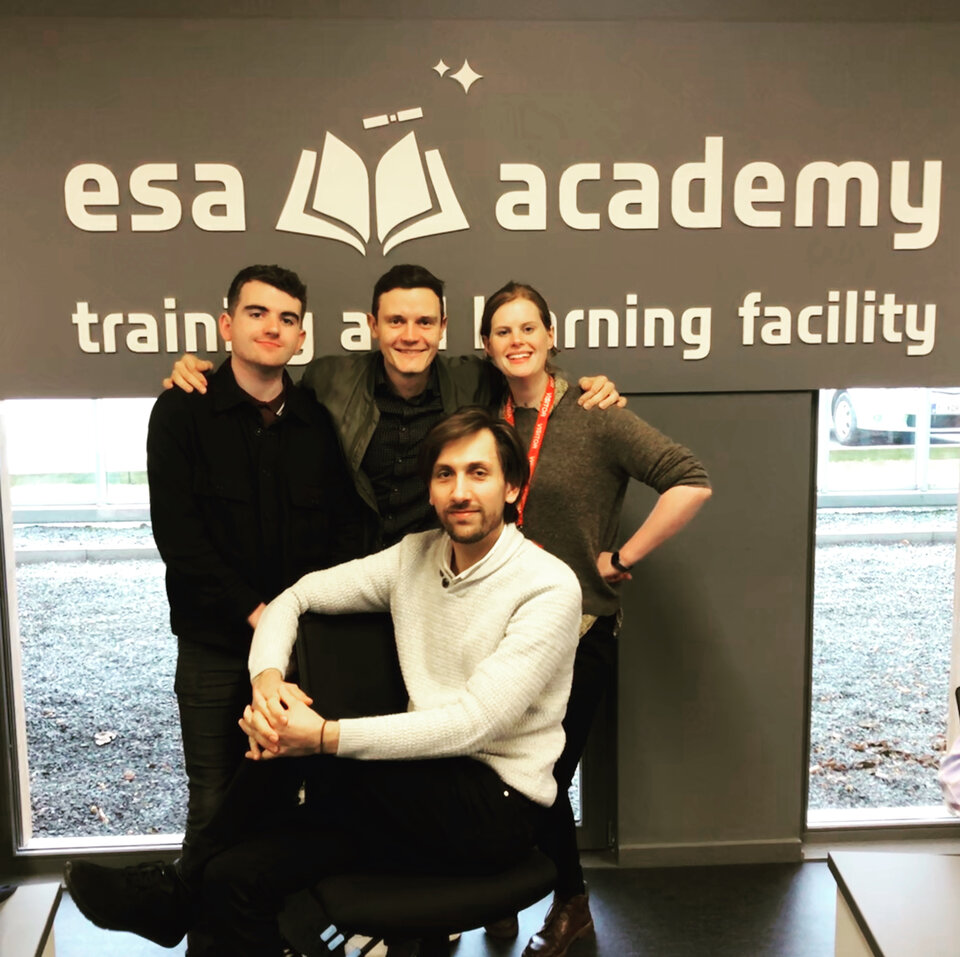Meet the teams: RELOX
Team RELOX is a collaboration between two PhD students from the University of Glasgow School of Chemistry, and two PhD students from the University of Manchester Department of Mechanical, Aerospace, and Civil Engineering. They are investigating the impact of gravity on the efficiency of electrolysis systems.
RELOX: Reduced-gravity Electrolysis for Lunar Oxygen
| University |
The University of Manchester & the University of Glasgow (United Kingdom) |
| Endorsing professors |
Dr Mark Symes, University of Glasgow Dr Kate Smith, University of Manchester |
| Team | Beth Lomax, Gunter Just, Patrick McHugh & Paul Broadley |

Many systems critical to sustainable exploration of the Moon and Mars rely on oxygen-evolving electrolysis - such as fuel cells, life-support systems, and oxygen extraction from local resources. In order to plan extended and sustainable surface missions, the expected production rate of these electrolyser-based systems in-situ must be known. Electrolysis is fundamentally impacted by gravity and many experiments have demonstrated a significant loss in efficiency in micro-gravity conditions. However, the efficiency drops in reduced gravity conditions (i.e. between micro-g and 1-g) remains to be investigated.

Team RELOX have designed an experiment to simulate reduced-gravity levels relevant to the Moon and Mars, using a spinning system and the background of microgravity offered by the Novespace parabolic flight. During each experiment the team will monitor the formation and detachment behaviour of the oxygen bubbles created through electrolysis, as well as the corresponding change in required potential. This will allow the team to quantify and predict the expected loss in productivity for an electrolyser operating on the Moon or Mars, compared to on Earth.
Additionally, in ground-based experiments, the team will investigate the same electrolysis system but operating in hyper-gravity conditions (i.e. higher than 1 g) using a higher rotation rate. Mapping out the electrolysis efficiency trends above 1 g with an identical system will allow for direct comparison to the reduced-gravity trends. This complete data series will allow for the reduced gravity efficiency drop in future oxygen evolving systems to be investigated without the need for parabolic flight (or another micro-gravity platform), but rather with extrapolation of hyper-gravity data.

